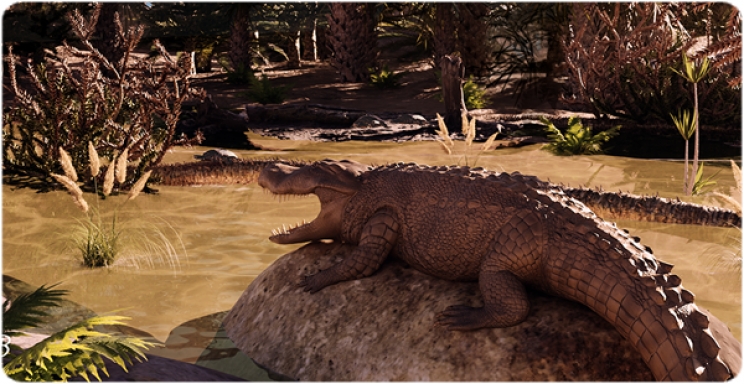During the Late Cretaceous, Europe was a cluster of tropical islands. In this environment, allodaposuchids—a diverse and common group of crocodyliforms closely related to modern crocodiles—occupied freshwater and brackish habitats from present-day Romania to France and Spain.
The Fontllonga specimen, measuring between 2.5 and 3.5 meters long, was large and robust, although it likely had not yet reached adult size. Its vertebrae and ribs indicate a broad rib cage supported by powerful forelimbs and a pectoral girdle with large areas for muscle attachment. This suggests it had greater terrestrial mobility than modern crocodiles, which are much more adapted to aquatic life.
The study was led by Francesco Della Giustina (University of Liège and University of Bologna), with Riccardo Rocchi (University of Bologna) and Bernat Vila, a paleontologist at the Institut Català de Paleontologia Miquel Crusafont (ICP) and the Museu de la Conca Dellà (MCD). The paper represents the culmination of Della Giustina's master's thesis conducted at ICP in 2022, supervised by Vila. “This specimen is an extraordinary find. Until now, most allodaposuchids were mainly known from cranial remains. Having an almost complete skeleton allows us to understand much better what these animals were like and how they lived,” explains Vila.
Although numerous skeletal remains from this group had already been discovered, one of the most remarkable features of the Fontllonga specimen is the exceptional preservation of the dorsal osteoderms (bony plates in the skin), which allowed researchers to reconstruct for the first time the complete pattern of these elements in allodaposuchids. This pattern more closely resembles that of modern crocodiles than other crocodyliforms of the time, with significant implications for understanding the origin and functional evolution of the dermal skeleton in modern crocodylians.
Four types of osteoderms have been identified, ranging from large rectangular plates with smooth keels to smaller triangular elements with pronounced crests, likely from the tail. These forms had not been observed in any other crocodyliform.

Skeletal reconstruction of the allodaposuchid found near Fontllonga, in dorsal (A) and lateral (B) views. Preserved elements are shown in white. Credit: Metasuchus (https://twitter.com/metasuchus). Scale bar equals 20 cm.
The specimen also preserves several teeth, including blunt posterior ones—ideal for crushing hard-shelled prey—and conical teeth with a distinctive ornamented pattern. This dental assemblage was key in identifying the animal as cf. Allodaposuchus palustris.
This discovery has also enabled a revision of the group’s evolutionary relationships. By incorporating the new data into phylogenetic analyses, the researchers conclude that allodaposuchids belong to the crown group Crocodylia, the same group as modern crocodiles. This result contradicts previous theories based solely on cranial material and shows how postcranial remains can significantly reshape our understanding of crocodyliform evolution.
The taphonomic analysis of the site indicates that the body experienced very little transport after death. Although the skeleton is not completely articulated, the bones were found clustered together with no major signs of displacement, suggesting rapid burial.
The crocodile that came out of a drawer
The majority of the skeleton was recovered during an excavation in 1990 in the locality discovered by Lluís Mercadé, within a narrow stretch only 3 meters long and 20 centimeters thick. It was excavated by researchers from the University of Barcelona (UB) and members of the Institut d’Estudis Ilerdencs (IEI). The remains were initially assigned to Adriana Vilaró, who began preparation under the guidance of Antoni Lacasa (IEI), but over time the preparation was halted and no institution took responsibility for the study. In July 2022, Vila, in collaboration with Antoni Lacasa, gathered all the material and deposited it at the Museu de la Conca Dellà (MCD), a decisive step that allowed the material to be prepared and studied in detail. A follow-up excavation in 2021, carried out by ICP and MCD members, confirmed that the site was almost depleted.
Main image: Palaeoenvironmental reconstruction of the Fontllonga area around 70 million years ago with the crocodyliform in the foreground and a titanosaur in the background (Author: Vito Fabrizio Brugnola / University of Bologna)
Original article:
- Della Giustina, F., Rocchi, R., & Vila, B. (2025). A new armored crocodyliform from the Upper Cretaceous of Catalonia (Spain): New insight into the evolution of the eusuchian postcranial and dermal skeleton. Cretaceous Research, 176, 106178. https://doi.org/10.1016/j.cretres.2025.106178
















